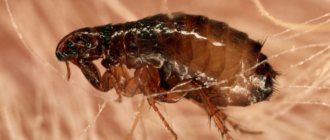The presence of rats is a problem in many private homes, since rodents are able to move almost freely from the yard or garden into the premises through numerous cracks and technological holes in the walls (and often gnaw their own passages).
Meanwhile, you need to fight rats in the house immediately after they are discovered, without putting up with such a neighborhood and not taking it for granted. The fact is that these rodents do not just harm the household, spoiling food, gnawing wiring and leaving their waste in the most unexpected places. In addition, they are literally dangerous to humans: they carry pathogens of deadly diseases (including typhus), bring fleas into the room, and there are also many cases where these animals attacked people (even sleeping children often become victims of bites ).
In practice, it usually happens that the occasional fight against rats in a private house seems to be going on, but slowly and without much hope of success. Many people spend weeks and months unsuccessfully laying out poisons, carrying an ultrasonic repeller or an ill-fated mousetrap with ineffective bait in different rooms, but the rats and mice are still there. At the same time, rodents do not pay attention to all these efforts, live nearby, reproduce and are not going to go anywhere.
Let's try to figure out why this happens and, most importantly, how you can quickly and effectively get rid of these unwanted guests once and for all...
We use effective poisons to control rats
Poisons (more precisely, poisoned baits) are suitable for controlling rats in most cases. If not throughout the house, then at least in areas where children and pets do not enter. Their only and truly significant drawback is the danger to pets and small children. Moreover, the risk is not only that pets or children may be poisoned by the poison itself, but also that a cat or dog may find a poisoned rat and eat it.
The optimal poisons for controlling rats, suitable for use at home, are products based on flocumafen ( this is the most effective second-generation blood anticoagulant to date ). Of the available and inexpensive drugs based on it, for example, the drug Storm is on sale: two or three briquettes are enough to fight one rat. If there are more rodents in the house, then you can buy several packages of the product. With its help, rats in a private house can be killed in 7-10 days.
On a note
On average, the death of pests occurs within 4 to 6 days. This is quite enough not to arouse suspicion among more cautious individuals, as a result of which in most cases it is possible to destroy the entire population of rats in the house.
Other drugs based on second-generation blood anticoagulants are approximately equally effective: Rat Death No. 1 and No. 2, Ratol, Nutcracker, Efa, Zookoumarin Neo, etc. The fight against rats with their help can last several days longer than when using Storm, but for domestic use there are no significant differences between these rat poisons.
On a note
The listed drugs are the same small packets that are often sold at markets from trays. They are truly effective despite their modest appearance.
Poisons with first-generation blood anticoagulants are somewhat less effective - for example, Zookoumarin, Ratindane, Rakumin. These products work more slowly, and their main feature is that for poisoning the rat usually must eat the bait at least twice (if you do not add new portions of the product in time, the effect may not be achieved at all).
In general, when using poisoned baits, it is important to adhere to the following rule: the product must be checked every few days, and if it is eaten, then new portions must be immediately replaced in its place. This must be done until the product stops disappearing - this will mean that there are no rats left in the house.
An important nuance of using poisonous baits: when working with them, you need to either wear rubber gloves, or take them out of the packaging and lay them out with tweezers. The fact is that soft briquettes easily absorb the smell of human hands, and rats, sensing it, may suspect something is wrong and avoid the bait. The same applies to poisons such as Rat Death, in which the briquettes are packed in filter bags. These bags do not need to be opened - the animals themselves gnaw through the shell and feast on the contents.
On a note
Some rodenticides contain, in addition to poison, also bitterness (for example, the Nutcracker drug). Rats do not pay attention to this bitterness, but a child will not be able to swallow such a remedy. Pets won't be able to eat it either, but they can find and eat a poisoned rat. Therefore, it is recommended to use poisoned baits only where there are no pets.
Another way to prevent children and animals from finding the poison is to place it in a bait box with a narrow entrance that only a rat can fit through. You can even make it yourself, for example, from a cardboard box by cutting a hole in the side. But, again, this design prevents only the bait from being eaten, but not the poisoned rodent.
What are the best means to fight rats in a house where a cat or dog lives? Rat trapping devices can come to the rescue...
What to do
You can remove rats from the house using various methods, it all depends on the capabilities and preferences of the owner. Some people are allergic to chemicals. Or children and pets live in a house where pasyuki or gray rats have appeared, and therefore the use of the same chemicals and traps is unacceptable. Methods for exterminating rats are as follows:
- attracting biological enemies;
- through traps and rat traps;
- use of toxic mixtures;
- using folk recipes;
- use of ultrasonic repellers.
We destroy rats using rat traps
In general, rat traps can also pose some danger to pets and children. For example, an ordinary crusher (usually called a mousetrap) has a spring so powerful that the clamp can break a cat’s paw or a child’s finger. In any case, the bruise from falling into such a trap will be very severe. However, this problem is solved by using a bait box - the rat trap is installed in it, the box is closed, and no one except rats will be able to touch the trap.
It is also useful to read: Effective means for fighting rats and mice
And in those places where neither children nor a cat or dog will find a rat trap, it can be installed openly.
Most often, at home, the simplest versions of rat traps and crushers are used to catch rats. They are easy to use, inexpensive (cost about 100 rubles) and very durable: with one trap, several generations of home owners can catch rats.
A more modern analogue of the crusher is the SuperCat rodent trap, which works on the same principle, but is more expensive.
In addition, recently electric rat traps powered by batteries have become increasingly popular - they are effective, safe and automatically not only kill rats, but also put them in a separate compartment (for the most expensive models) and notify the owner about the capture of the pest.
On a note
There are also glue traps on sale and just glue for rodents, which you can apply to a piece of cardboard and get a homemade glue trap. Disadvantages of this method: if a pet gets into the glue, it will have to be cut off, and in some cases the clothes of the “caught” child will only have to be thrown away. In addition, there is an opinion that glue rat traps are completely inhumane: the animal suffers in them for a long time until it dies of thirst.
Rat traps are installed where rats are most often found. The correct choice of effective bait is also very important, otherwise the animals will avoid the device.
The following are good baits:
- Food for cats or dogs;
- Smoked sausage;
- Smoked fish;
- Lard, fried on a match on one edge;
- Bread crust soaked in vegetable oil.
At the same time, cheese and fruit are not as attractive to rats as meat products.
Catching rats alive
You can catch a rat with a trap that will not cause any harm to the animal. There are many designs of such rat traps, and perhaps the most common of them is a cage with a door that slams shut when the animal tries to take the bait.
Such devices (live traps) do not pose any danger to people and animals, and their main disadvantages are their bulkiness and the need to do something with the rat after catching it. This need does not arise when a trap is in operation - it itself kills the rodent, whose corpse can simply be thrown away with the garbage.
A living rodent will either have to be killed yourself, or taken a long distance from the house (at least a kilometer) and released. Alternatively, the prey can be given to a cat, but many modern cats themselves are terrified of rats.
Live traps are installed in the same places as the traps and loaded with the same baits.
It should be noted that catching rats with live traps does not necessarily imply the purchase of an industrial device. You can also fight pests in a private home using improvised means, and often this method turns out to be even simpler and more effective.
Burnt remains
Another class of substances that rats cannot tolerate are burnt or burned remains of certain substances:
- Burnt feathers or down. You can burn any feather, but duck down has the most repulsive smell. The burnt remains are mixed with starch and scattered around the house.
- Burnt rubber. Rats are afraid of this smell and immediately leave the area where it is smelled. Pieces of rubber are placed in a metal container, poured over with flammable liquid and allowed to burn. The burned parts are laid out around the house. The container retains the smell well, so it is also used for repelling.
Related article:
7 beneficial insects in the garden that need to be protected
But the most effective protection is provided by burnt rat fur, which causes its relatives to feel a strong sense of danger. This method has been used by people since ancient times. To do this, the skin must first be removed and then set on fire. The resulting residue will be the most effective rat repeller.
Simple but very effective homemade rat traps: description of designs
There are many design options for rat traps that you can assemble with your own hands from scrap materials. There are usually no problems finding such materials in a private home.
Below are examples of original designs.
A bucket with a spinning plastic bottle (or aluminum can) above it. Bait is applied to the bottle, the rat reaches for it, the bottle spins, and the animal falls down. It is useful to pour water into a bucket before use so that caught animals cannot jump back out. The photo shows an example of such a device:
The following video shows another unusual way to fight rats in the house using a homemade rat trap:
Making such a rat trap is more difficult and troublesome than buying a ready-made one, but when it is important to quickly take measures to catch the pest, then a homemade device may be a good option for solving the problem.
Don't forget about traditional fighting methods!
Practice shows that with a relatively small number of rats in the house, a good rat-catcher cat will fight them more effectively than any traps or traps.
The only problem is that most domestic cats are lazy and, alas, cowardly. They don’t want to guard the rodent for hours, and many are even terrified of their ancestors’ food items.
However, it also happens that a cat actively catches all the mice and rats on the property, but lives in the yard and is not allowed into the house. In this case, in order to defeat rodents in your home, it is enough to simply allow a fearless yard hunter to enter the house, basement, garage and attic for some time. Even the smell of a cat is often a deterrent for rodents.
On a note
If you know that there are only one or two rats in the house, then you can also borrow a cat or a cat from a neighbor if the pet is known to have rat-catching abilities. As a rule, in two days in the basement without food, the rat catcher destroys pests faster and more reliably than any poisons or traps.
Fox terriers and Jagd terriers also actively catch rats, and domestic ferrets also frantically hunt them. However, obtaining such hunters can be much more difficult than borrowing a cat living in a neighboring house.
Use of pesticides
Poison in the fight against rats
Another method of getting rid of rats is the use of poisonous drugs. Today, the chemical industry market offers a lot of products designed to combat rodents. Modern pesticides are produced in the form of liquid concentrates, granular powders, and aerosol preparations. They differ not only in the method of application, but also in the result of the action. Some compositions are ready for use, while others are used to prepare baits.
- Poisons of chronic action, which include anticoagulants (bromadiolone or brodifacoum). They disrupt the blood clotting process, resulting in the death of the rodent from internal bleeding.
- Acute poisons. No less toxic drugs that lead to liver or kidney failure.
On a note!
Do not use poisonous baits in homes where children and pets live.
The following brands of pesticides are very popular among consumers:
- Raptor is a granular product for killing mice and rats, containing brodifacoum. To poison rats, it is better to make bait from it.
- Help is a pesticide with a wide spectrum of action. It can exterminate rats, mice and even moles. The basis of the drug is bromadiolone.
- Krysin is a poison for rats that begins to act almost instantly. It can kill a rat in just a few minutes; the entire family of pests can be removed in 1 day.
- Zookoumarin is a poisonous drug, the death of which occurs after 7-14 days. It has a specific smell that can scare away animals, and therefore it is preferable to use it for preparing baits. Regular removal of rats with this drug can help develop immunity in rodents. Therefore, from time to time the pesticide should be replaced with other analogues.
- Fluoroacetamide is a very toxic powder that can quickly kill rats. However, it should be used with extreme caution, as the drug poses a health hazard to people and pets. It is used both to prepare poisonous baits and is dissolved in water.
- Krysid is a rat poison that has an acute effect on rodents. It does not dissolve in water and does not pose a serious threat to humans or pets. When using, you should follow the dosage prescribed in the instructions, since an insufficient amount of the product may contribute to the development of resistance.
Or maybe somehow scare away rodents?
But fighting rats with repellents is often not as effective as advertised in advertisements for various rodent repellers. The fact is that rats can quickly get used to even the most effective deterrents and devices.
It is also useful to read: How to reliably get rid of rats and mice in your private home
Popular folk remedies are especially ineffective:
- Black beans;
- Elder;
- Ash;
- Broken glass;
- Singed fur;
- Burnt plastic...
In most cases, they do not repel rodents at all. In some cases, animals may become wary if kerosene or vinegar is poured into their passages, but in such conditions people will not be able to live in the room (and kerosene is also a fire hazard).
The situation with ultrasonic rodent repellers is a little better, but still not ideal. The most effective devices are quite expensive. For example, it has been experimentally verified that rats are repelled by the following ultrasonic devices:
- Bioguard (price about 4,500 rubles);
- Chiston-2 PRO (approximately 3,000 rubles);
- Chiston-2 (2500 rubles);
- TM-315 (more than 10,000 rubles)…
But rats sometimes get used to them too. Devices with a price of up to 1000 rubles, as a rule, are completely ineffective and do not allow you to fight rats in a private home.
On a note
So-called “electromagnetic” and “magnetic resonance” repellers are completely useless for fighting rats. Their principle of operation has not been confirmed practically and not even strictly substantiated theoretically. Simply put, these are ordinary pacifiers, which can only please you with multi-colored LEDs.
Also ineffective are small Chinese repellers, which are positioned as super universal: repelling rats, mosquitoes, bedbugs, and cockroaches. All these creatures react completely differently to sounds (and some do not react to them at all), and therefore the most “universal” device in practice will also be the most useless.
It is important to keep in mind that powerful ultrasonic rodent repellers are harmful to cats and dogs - these pets hear well in the ultrasonic range (above 20,000 Hz). If the house contains domestic decorative rats, hamsters or mice, then they will also react sharply to the signals of the repeller - they may stop feeding and even die from stress.
Ultrasonic repeller
Ultrasonic rodent repellers
A modern invention that operates on the basis of ultrasound. The human ear does not feel vibration, so the operation of the device does not affect one’s well-being or health. The device runs on city electricity or batteries. To prevent rodents from getting used to ultrasound, it is possible to periodically change the frequency.
The area of action depends on the power of the device. Carpets and furniture drown out the background. It is recommended to place a repeller in each room so that the negative background is present throughout the house. It is recommended to install the devices for 1 month, then take a break.
The ultrasonic repeller acts on the nervous system. It can drive away rats in 3-4 weeks. The animal feels constant discomfort. The only way for a rodent to get rid of poor health is to escape.
On a note!
Ultrasonic rodent repellers are recommended to be used in parallel with other control methods. There is no exact information on how ultrasound affects pets. If you have a hamster, guinea pig, or decorative white rat in the house, you should stop using the device.
Where can you go and complain if there are rats in your house?
Finally, you can fight rats in a private home with the help of professional pest control experts. This is not cheap (depending on the size of the house, the number of rooms and the distance from the city, such a service can cost from 3,000 rubles), but it completely relieves the home owner from any worries.
The main difficulty here is to choose a conscientious contractor who will fulfill his obligations efficiently and really destroy rats in the house. To do this, you need to contact companies that:
- Long on the market;
- They have a large number of positive reviews;
- They work strictly according to the contract, they put a signature and seal on the contract itself;
- They provide a guarantee for their services and indicate it in the contract.
But there is no point in contacting the state SES or other municipal services: a private house is the jurisdiction only of its owner, and it is the owner who ensures its protection from rats and solves all problems associated with the appearance of rodents here. Therefore, the best place to turn for help is private pest control and pest control services.
Herbs
The easiest way to protect your country house from rats is to use herbs, the smell of which they cannot stand or are afraid of. These include:
- Blackroot. A poisonous plant, the aroma of which is felt only by rodents. They use its branches, previously scalded with boiling water and laid out in different places, or a decoction that is sprayed on the room. To prepare a decoction, dry roots are poured with water in a ratio of 1:10, boiled for 10 minutes, cooled and poured into a spray bottle.
- Tansy. The rich smell of camphor, characteristic of this plant, is very disliked by rats.
- Sagebrush. Dry grass with a bitter-tart aroma is used to cover the perimeter of the home. The saturated decoction is also sprayed onto the likely entry points of rats.
- Tomato tops. It is cut into small pieces and sprinkled thickly around the country house. Rats are afraid of the specific aroma of tops because they contain toxins.
- Coriander (cilantro). They use stems and seeds, which are laid out in the house.
- Peppermint. One of the most effective plants for repelling rats from entering the house.
Related article:
5 expert rules to prepare seedlings for planting in open ground
Reliable home protection from rats
The fight against rats will not be completed unless you figure out how these animals get into the house and block the entry routes.
Most often, rodents enter the house in the following ways:
- They get through cracks in the walls, as well as through the cracks between sewer and ventilation pipes and the walls of the house;
- Through open doors and windows;
- Through a ventilated or decorative façade. Here they rise between the facade itself and the wall to the attic, climb into the insulation;
- They climb through tunnels under the foundation if the basement or ground floor has an earthen floor (such tunnels can be made by moles, and their passages are later used by rats and mice).
It is important to understand that a private house attracts rats with a warm microclimate and an abundance of food. These animals cannot live on the street all year round; their main habitat and reproduction is human housing, and therefore they always strive to settle in a house, basement or in technical buildings. Therefore, if rats have the opportunity to appear in a house, they will definitely appear here simply because they will not survive anywhere else.
It is not difficult to understand that a rat lives in the house: it leaves its droppings everywhere it goes, gnaws through grocery bags, spoils food supplies (almost any kind), and litters at night.
After removing the rodents, it is important to monitor the condition of the house for a week or two, and if the signs of rats have disappeared, then we can state that the fight has ended successfully. Then you need:
- Check all possible places for rats to get into the basement, seal all the cracks and passages (if the floor is earthen, then it is useful to lay a metal mesh on the floor);
- Seal all gaps between pipes and walls;
- Check whether rodents can enter the attic along the facade. This is the most difficult way for them to enter the house; here you need to either seal the holes in the facade or block the points of entry from the roof into the attic;
- Allow the cat to enter the house, or as a preventive measure, allow it in for an “inspection” once a week or two.
If these measures are not taken, then the fight against rats can turn into an endless epic - they will arrive regularly from the surrounding courtyards and neighboring houses.
Interesting video: an example of how an original homemade rat trap works
Prevention of rats
Unfortunately, simply keeping the house tidy and clean is not always enough. To protect your home from rodents, try attaching a fine grille to all ventilation ducts, and also seal all the cracks and seal the water supply system. It is best to store food in containers with tight lids, and dispose of garbage as quickly as possible so that pests do not have access to food.
You can take action already at the stage of laying the foundation of your private house or cottage - install a fine-mesh mesh vertically in the cement and seal all small holes.
If you live in an apartment, remember that many of the listed herbal products can be grown even on the balcony and used both to scent the room and to repel rats.











